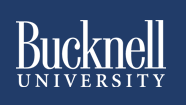
Faculty Help Sheets

 |
Blackboard Support: Faculty Help Sheets |  |
Why Use Blackboard: External LinksThe "web" metaphor may no longer be appropriate for the World Wide Web, unless it's an extremely large, complicated, interconnected web. "Jungle" or "thicket" might be more accurate these days. As has often been lamented, there are a lot of unauthoritative or inaccurate sites available on the Web - and that might be a charitable way to describe those sites. Students not only have a remarkable tendency to find such questionable sites, but they also lack the critical understanding to evaluate the authoritativeness of Web sites that they do find. You can provide a paper list of useful Web sites to hand out to students, but students then have to type (or mis-type) those URLs into their browsers. A better approach is to create a similar list of "approved" or authoritative Web sites specifically related to the material of your course and to post those within Blackboard. You can add those links to an "External Links" section (for example), and they become hot links that take students directly to the referenced page. You can also add brief descriptions of the links, so students understand the nature of the page or resource that you are recommending. You can also link to Web-based readings, giving the students "one-click" access to those works. For instructions on how to add external links to your Blackboard course site, see Adding External Links to Your Course. Written by Leslie Harris, originally for the Office of Instructional Technology at the University of Scranton. Revised with permission and adapted to the Bucknell University Blackboard environment. Last revised August 6, 2008. Please send questions or comments to itec@bucknell.edu. |